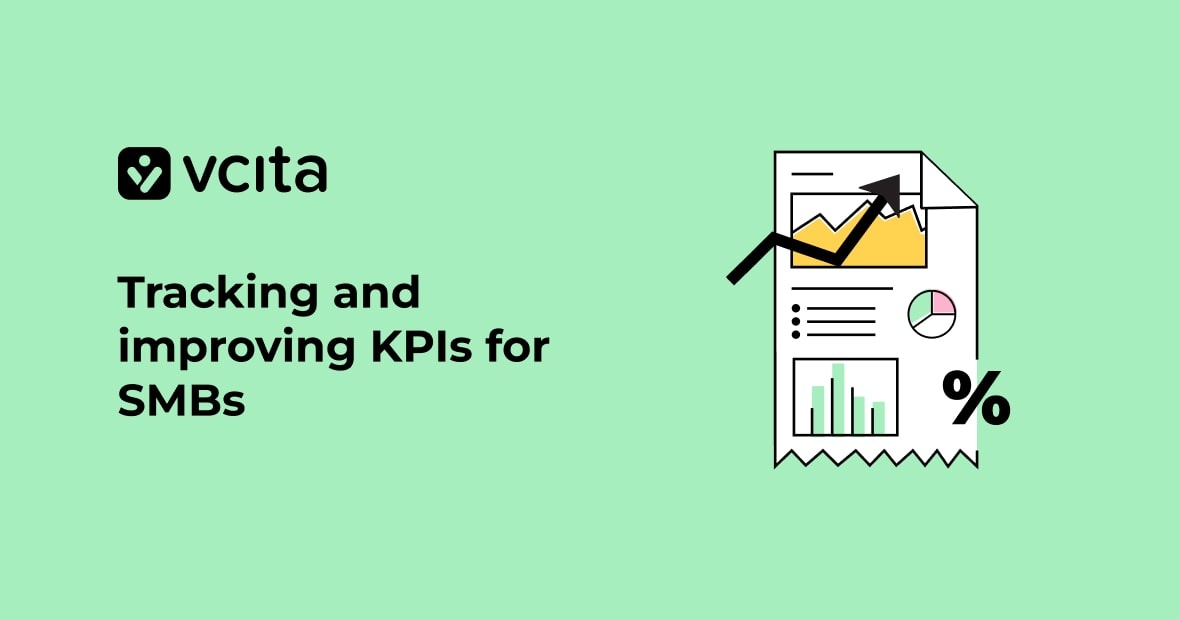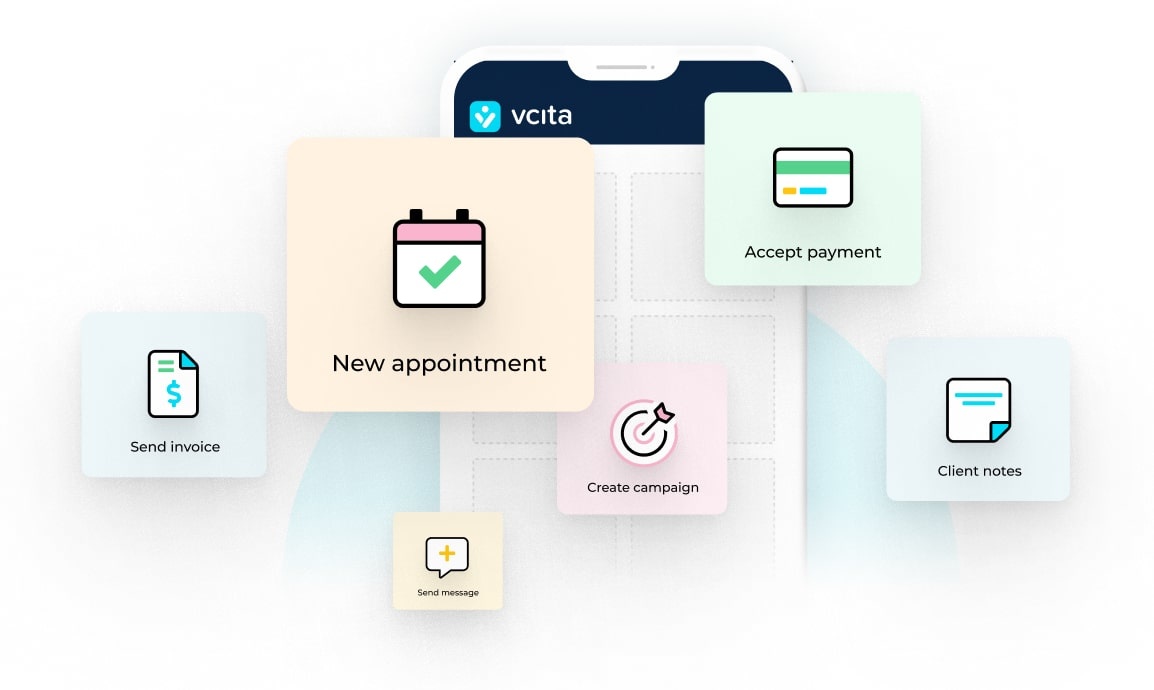Mastering your KPIs is the quickest way to grow, streamline, and strengthen your service business. Read on to find out how to understand them.
In this post, you’ll learn:
- Which KPIs actually move the needle for small service businesses
- How to track KPIs simply and consistently without drowning in numbers
- Proven strategies to improve KPI performance over time
- How vcita’s features can make KPI management effortless
- Common mistakes to avoid when setting or reviewing KPIs
- How to build a KPI habit that sticks and drives long-term growth
Why KPIs matter for service-based businesses
Key Performance Indicators (KPIs) help you understand if your marketing, operations, customer service, and finances are moving in the right direction. Without tracking KPIs, it’s almost impossible to know what’s working, what’s falling behind, and where new opportunities may be hiding for your service business.
KPIs offer a real-time mirror reflecting your operational health, marketing efficiency, client satisfaction, and financial stability. When you track the right numbers, you can predict challenges before they impact your revenue, identify growth areas, and stay ahead of competitors. Service business owners who track KPIs consistently make better decisions, catch small problems before they become big ones, and grow sustainably.
Essential KPIs every service business should track
Choosing the right KPIs is critical. Too many, and you’ll get lost in noise. Too few, and you risk missing important insights.
Focus on KPIs that clearly reflect your business health:
- Client retention rate: How many clients come back for more services.
- Average revenue per client: How much income each client generates.
- Booking conversion rate: How many leads turn into confirmed appointments.
- Service utilization rate: How efficiently your team’s time is spent.
- Client satisfaction score: How happy your clients are with your services.
- Outstanding invoices: How much money is still owed.
- Appointment no-show rate: How often clients skip scheduled sessions.
- Lead response time: How quickly your team follows up with new inquiries.
- Upsell/resell rate: How often clients purchase additional services or upgrades.
Each of these indicators highlights a different piece of your service business’ overall performance puzzle.
How to track KPIs without getting overwhelmed
Tracking KPIs should feel empowering, not burdensome. The secret lies in building an easy, repeatable system.
Here’s how to do it:
Start small and prioritized – Pick 3-4 KPIs that directly impact your core revenue streams.
Set clear benchmarks and targets – Define what success looks like. For example, “Retain 80% of clients over 6 months.”
Use automation wherever possible – Manual tracking burns time. Systems like vcita automate data collection so you stay focused.
Review KPI trends regularly – Weekly or monthly reviews help catch issues early and maintain consistent momentum.
Visualize your data clearly – Dashboards and reports bring KPIs to life, making patterns easier to spot and interpret.
Share insights with your team – Collaborative visibility keeps everyone aligned and motivated around the same goals.
Adjust quickly when needed – If a KPI starts slipping, act fast. Don’t wait for quarterly reviews to fix what’s off-track.
How vcita helps track KPIs effortlessly
vcita offers small service businesses powerful tools that eliminate guesswork and simplify data management:
- Client management dashboard: Monitor client activity, repeat visits, payment history, and bookings from one central location.
- Payment tracking: Keep tabs on paid, overdue, and pending invoices without chasing paperwork.
- Scheduling reports: Analyze appointment trends, cancellations, no-shows, and service demand.
- Marketing campaign analytics: Evaluate open rates, click-throughs, and client engagement from email and SMS promotions.
- Service utilization reports: Identify which services drive the highest bookings, satisfaction, and revenue.
Using vcita, you can turn mountains of scattered data into simple, actionable insights that drive real business growth.
How to improve KPIs once you’re tracking them
Tracking KPIs is only the first step. Driving those numbers in the right direction is where the magic happens. Here’s a simple framework to consistently improve your KPIs.
1. Identify bottlenecks early
Pinpoint exactly where clients or money fall through the cracks. If your booking rate is low, maybe your intake process is confusing or your offers need rewording.
vcita tip: Use automated appointment reminders to reduce no-shows immediately.
2. Set micro-goals for faster progress
Small, actionable goals outperform giant, vague targets. Instead of “Grow revenue,” aim for “Increase average invoice by 10% over 90 days.”
vcita tip: Offer service packages through your client portal to naturally increase average ticket size.
3. Actively collect and act on feedback
Clients’ real experiences offer goldmines of improvement ideas. Ask for feedback after every appointment.
vcita tip: Use vcita’s automated follow-up messages to request quick post-service reviews.
4. Optimize your best-performing services
If certain services bring high client satisfaction and revenue, double down. Promote them more prominently.
vcita tip: Adjust your online service catalog instantly to highlight popular or higher-margin services.
5. Celebrate and leverage every win
When KPIs improve, even a little, celebrate! Recognition fuels motivation. Share wins with your team, no matter how small.
vcita tip: Use milestones within your CRM to track and showcase success stories.
Common KPI mistakes to avoid
Even the best plans can get derailed. Here are classic traps to dodge:
- Tracking vanity metrics: Measuring followers or likes without connecting them to bookings or revenue.
- Ignoring red flags: Hoping trends improve on their own wastes precious time.
- Setting vague or unclear KPIs: Goals like “get better at marketing” don’t help; “increase lead-to-booking rate by 15%” does.
- Checking KPIs infrequently: Annual reviews are too late. Consistency wins.
- Tracking without action: Measuring for the sake of measuring leads nowhere without clear follow-up plans.
Building a KPI habit that sticks
KPI tracking succeeds when it becomes part of your natural business rhythm, not an isolated chore. This requires habits like:
- Schedule a “KPI check-in” on your calendar weekly or monthly.
- Make reviewing KPIs part of regular team meetings.
- Link bonuses or rewards to hitting specific KPI milestones.
- Keep your KPI dashboard visible and simple, not buried in spreadsheets.
- Empower your team by sharing wins and recognizing improvements openly.
Why vcita makes a real difference
Many platforms track isolated metrics, but vcita brings your whole client journey into one place: from lead capture to booking, billing, marketing, and retention. Every client interaction automatically feeds into actionable KPIs.
That means less toggling between apps, fewer manual reports, and a complete picture of your business performance with minimal effort. Plus, with features like mobile notifications, service automation, and payment reminders, vcita doesn’t just track KPIs, it actively helps improve them day after day.
Turning insights into action
Strong KPI habits empower small service businesses to grow with confidence. With the right focus, clear goals, and tools like vcita supporting your journey, tracking and improving KPIs can become a simple, rewarding part of running your business, not just another task. If every number tells a story, your KPIs should guide you to write a story of smart, sustainable growth.




























